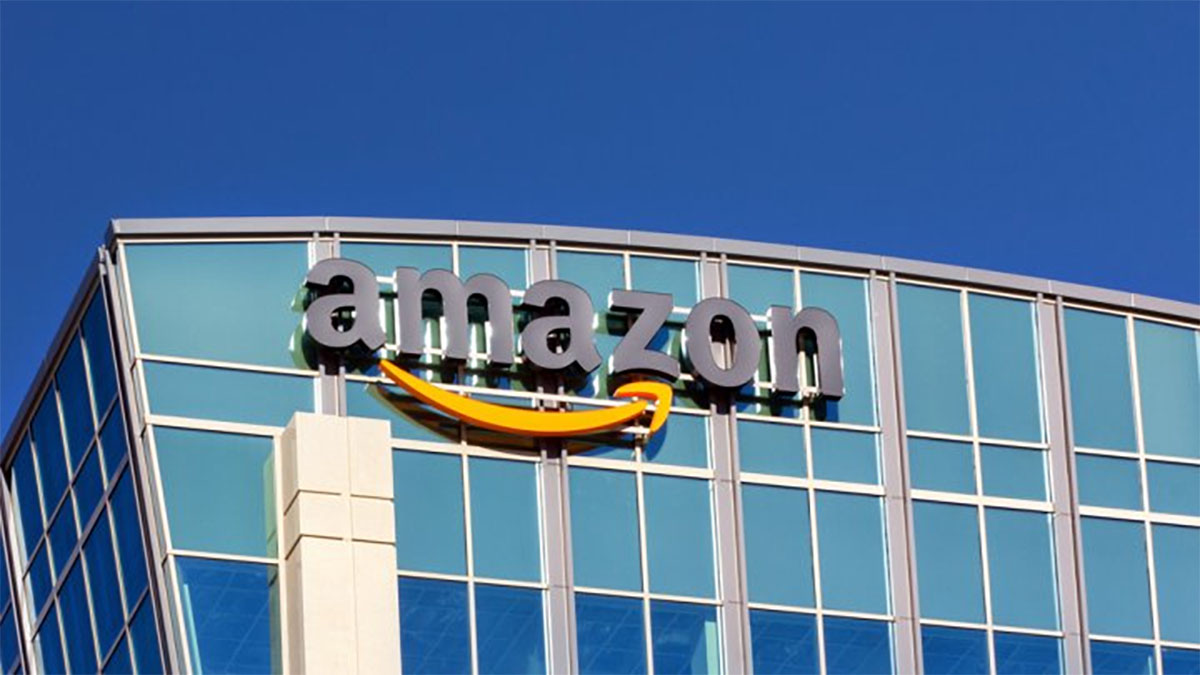
The economic development world is all abuzz with last week’s news that Amazon is courting cities for a second headquarters that will match their current, in Seattle, with 50,000 employees and over 8 million square feet of office space. To no one’s surprise, the State of Rhode Island has declared its intention to submit a proposal to lure Amazon’s new offices and tens of thousands of highly paid workers.
Let’s first acknowledge that Rhode Island and Providence aren’t going to win this competition. A quick read-through of the Amazon RFP and a bit of reflection on the recent move of GE to Boston and Amazon’s current headquarters in urban Seattle and it’s clear that the Providence metro area doesn’t have the scale, employment base, public transportation system or any number of other requirements of the proposal. The State and City will no doubt offer a generous package of incentives. But so will dozens of other cities—cities that are larger, with faster growing populations of young college graduates, rapidly improving transit systems, superior bike infrastructure, and urban placemaking projects galore.
But this post isn’t about being negative. I get that the state has to respond to something like this, so I’m not going to dwell on whether that’s a good use of resources. I’m more interested in what this Amazon mega-RFP can teach us about what we need to be doing as a city and state if we want to grow our economy in the 21st century.
Amazon is in Seattle because that’s where it was founded. Lesson: We need to spend our time and resources strengthening homegrown businesses so that they succeed and grow with their attachment to Providence and Rhode Island. Amazon is also in Seattle because of the large and growing pool of highly trained workers; they will be looking for a well-educated metro-region that is also attracting many new young, highly trained workers. They will be looking for something similar in their new location. As Joe Cortright writes at City Observatory, “the location decision is going to be made by the HR department.”
This means two things. First, Rhode Island needs to continue to improve educational attainment, not just at the elite end, but in the wide middle. But also, crucially, it needs to continue to do the things that are attracting new highly trained professionals to move to cities: exciting placemaking, bike infrastructure, beer, transit, and infill development.
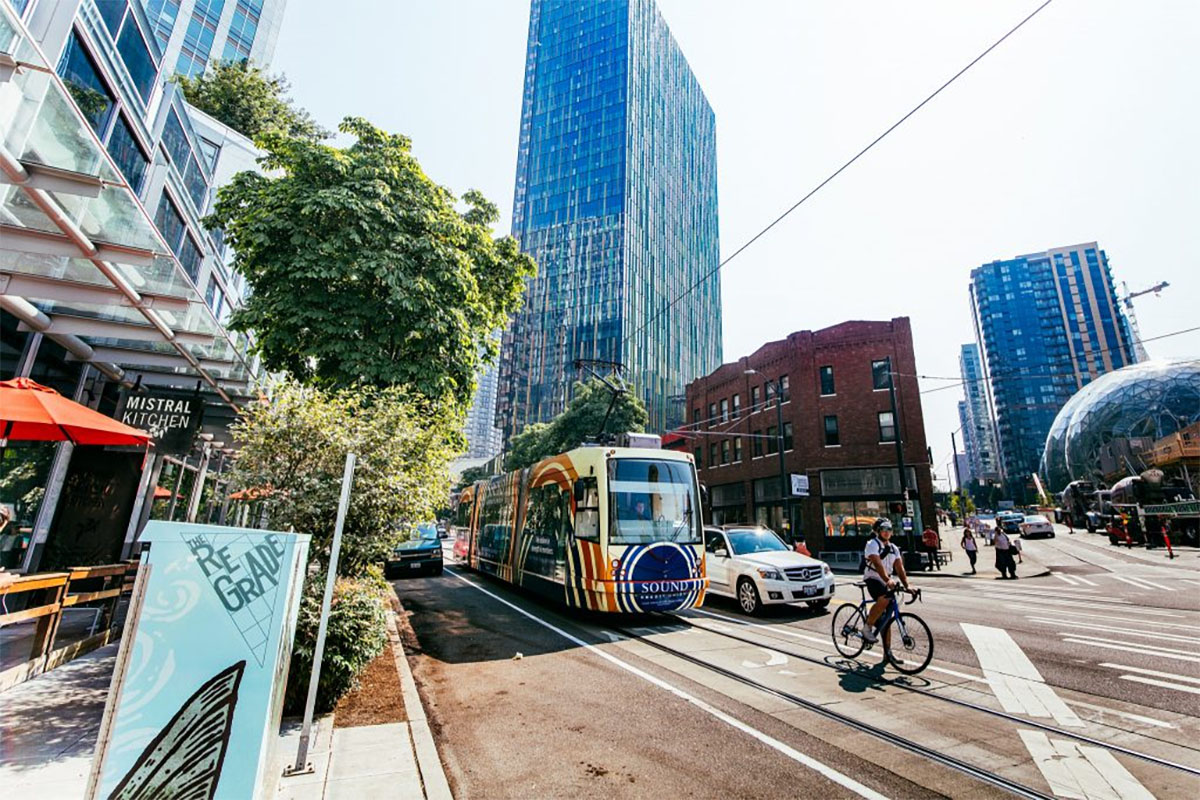
This is what the street view looks like in front of Amazon HQ—transit, walking, biking, and dense urban development
When you look at the City and State you see little understanding of the importance of creating the places that these professionals are looking to move to. From RIDOT’s Rhode Works program of rebuilding highways, to the ailing and underfunded RIPTA transit system, to the City Council’s recently passed resolution making it harder to create bike lanes, you don’t get a sense that our political leaders are trying to emulate successful places— from Portland, OR, to Denver, CO, Austin, TX, Washington, DC, or Cambridge, MA.
So we’re not going to win the Amazon HQ2 RFP—it would probably be bad news if we did, but that’s another story—but we can learn some useful lessons to grow our City and Region so that someday we will be the kind of place that won’t need a mega economic development relocation to have a prosperous, equitable economy.

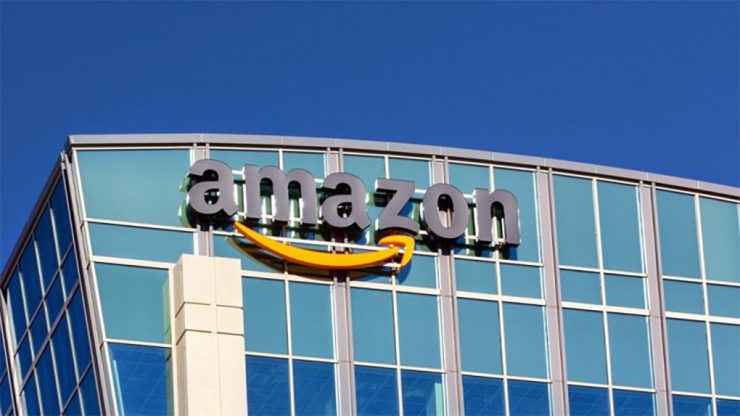
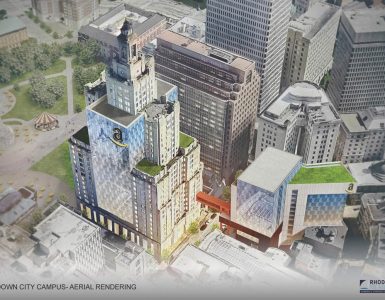

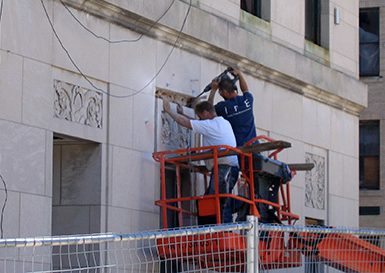

Excellent point. Let’s hope that someone in the state power structures reads this and absorbs your point. But RI also has a problem with Providence. You can glow on about “historic preservation but an outside look will say, “That’s nice, you have some great streets, but what about your dreary downtown? You want to be a revered relic of a city, with your revered and unusable Superman, looking like a hi-rise corpse over the city center.”
We need to face up to the Superman Building’s uselessness, the fact that it is never going to rehabbedi any economically rational way, no one is going to swoop in from the outside to rescue, it’s going sit there as a rotting corpse unless someone has the good sense to say it has to come down and be replaced with a modern up to date, green building with a striking, superior design and commercial functionality. The new building needs to built based on a world wide competition for its design. It could be an echo of the Freedom Tower in New York, or a unique (for the US0 garden building , or a host of other possibilities. A world wide competition, with a decent prize, is the only way to rescue Providence from the mediocrity that developers have been foisting on the city.
It would be best if everything were torn down up to Dorrance Street so that the footprint allows for a tall structure, perhaps up to sixty three stories, the tallest in New England. At any rate this spectacularly designed building should not have to neighbor with the CVS building and the 7-11 Building. In fact an outside feature could be waterfall or an above ground koi pond (pehaps situated across the street in Kennedy Plaza.. And yes, a feng shui expert needs to be consulted so that Asian investors are attracted. Right now, according to feng shui principles, having a rotting corps of a building looming over the heart of the city brings decay and hard times.
Above all the building should offer top of the line Class A interiors. and the building should not be dressed up in ersatz red brick. It needs to be boldly modern, a statement that Providence is serious about reviving its city center a desirable, prestigious business hub.
There are some lovely historic buildings in downtown, and they should continue to be preserved. They would be an aesthetically stimulating counterpoint to the new strikingly modern (no ersatz red brick!) buildings that need to go up downtown, with the Superman Building’s replacement leading the way.
Quality historic buildings are one of Providence’s greatest assets. Tearing down the remarkable Superman building is one of the worst ideas I’ve heard in a state that makes endless bad ideas. The last thing Providence needs is a pointless crappy glass high rise like every other desperate city with a modernity inferiority complex. If you really need a stupid glass high rise for the sake of it, put it on any one of the endless vacant lots littering downtown Providence.
Seth Zeren’s piece is a very thoughtful summary of the lessons RI could learn from Amazon’s search for a new headquarters, which is about much more than one building. I believe Seth is right that Providence doesn’t’t have much of a shot for two reasons: the State’s track record in attracting the kind of workers Amazon would hire, and its underinvestment in transit.
From 2000 to 2010, RI ranked 49th out of 50 states in population growth, and if it weren’t for the implosion of Detroit, we probably would have been dead last. In fact five cities, representing 25% of the state’s population, lost 10,000 people, and 55% of all RI census tracts lost population in the decade. Of course, a big win with an Amazon, or a GE, or a Google would be transformative, but its a pretty hard sell, given the lack of investment the State has made in the things that these companies care about.
Rhode Islanders use public transit at about half the national average, and commuters to Providence use transit at a quarter the rate of Boston. About 90% commute by car, and over 80% travel alone: if Amazon were to locate in downtown Providence, they would need over 300 acres of additional parking alone. It should be pretty clear that this isn’t a winning strategy.
To be competitive in today’s knowledge economy, RI needs to invest in its cities, and better transit should be job one.
I’d be fine with Boston winning the hq. That’s 50,000 newly hired people with high paying jobs who might choose to live here and commute to Boston every day.
If RI were in the Amazon game, around the State House is a non-starter, its already cramped and congested, and State House green space should not be lightly sacrificed.
If we were to seriously compete it would either have to be as an add-on to Boston (if states could ever cooperate) or on the I-195 lands, or Quonset.
If the Superman building is really unusable, it should be replaced by a similar building to preserve a beautiful historic design needed in central Providence. Selling New England’s beauty including historic building styles is a key selling point, the photo of Seattle has some ugly modern buildings, but that city can get away with it because they are surrounded by well protected natural beauty.
But the larger point should be the blackmail the companies use to get tax breaks which at the macro-scale inevitably come at the expense of other taxpayers, competing businesses, and/or underfunding aspects of government. But no state will stop playing the game if others do, so the only way to stop it is cooperation of all the states or Federal law.
The 195 land would make the most sense, building above 95 (to connect downtown to the West Side — a nod to the “Westminster Crossing” proposal from Buddy Cianci’s administration), building above the rail near the train station, the Capital Properties leased land behind the Citizens Bank building, and countless surface parking lots downtown would all have to be on the table. However, I think the City/State would have to embrace (and foot the bill for) central parking garages and “people movers” — any plan can’t include employees driving into downtown to park under buildings, that would be a disaster.
I get that Providence may not have the infrastructure to support a project of this size, but what if this project forced Providence to prepare for Amazon or future large developments? Give this state a kick in the rear. The new transportation center, 6/10 project, new bridges at the 95 Rt 6 crossing, and RIPTA circulation including Kennedy Plaza upgrades is a good start. As I type, I’m realizing that Providence may be in a perfect position with all the infrastructure upgrades and open land. There is still a lot of land between rt 95 between the Jewelry district and downtown, as well as across the river. Imagine the need residential projects if Amazon chose Providence?
Capital Properties controls the land behind the Citizens Bank building, those parcels would be perfect. Along with the new proposed parcels near the train station and State House. What could really be a unique proposal would be Providence offering land at and *above* the Northeast Corridor with DIRECT pedestrian access to the Providence Train Station. Realistically, no other City in the northeast can offer that.
I agree with Gio that Providence/RI needs to take a more aggressive approach to infrastructure projects, like 6/10, the proposed Transit Center at the train station, RIPTA’s Downtown Transit Corridor, KP upgrades, etc. The State announced that it is about to launch a comprehensive, long-term transit plan that should touch on all these issues, but the recommendations aren’t expected before 4Q 2018, long after Amazon will have made its decision (and unbelievably, long after construction will have begun on two critical pieces – the Transit Center and DTC!) I also agree with KCB that commuting by car downtown parking would be a non-starter for the numbers involved. Central parking (presumably by highway exit ramps) with “people movers” (aka transit) would help, but can be a difficult sell: once commuters are in their cars, they tend to want to stay in them. A better solution might be regional transit hubs, one day with drop-off lanes for autonomous vehicles.
I also agree that the area around the train station is the most attractive development site in the city, with rail links to NY and Boston and the potential for better rail connections to TF Green and South County (see GCPVD – “The state’s 2012 bet on commuter rail…”), but it has its limits. It’s possible the area could support 3-4 million square feet of development, but it should to be a mix of commercial, residential, retail, restaurants, hotels, etc. That could mean over 15,000 additional commuters to an area with only two roads today, and little room for additional parking. To fully develop the Capital district, the State would need a much more robust transit solution than simply moving KP to the train station.
Amazon forecasts that it will need 8-10 million sf over the next 10 years, so they would also need lots of other development sites, which would require better downtown and regional transit. Amazon would more than double RIPTA’s current ridership, but meeting that demand with more buses to KP or the train station would be a disaster.
Last night CNBC released a statement that said Amazon executives were pushing for Boston. Online betting site Paddy Power has Atlanta as 2-1 and Boston as 7-1, so that indicates an eastern seaboard city may be most likely.
Similar to the Olympics, siting Amazon HQ2 in Boston may actually be better for Providence than actually getting them. Promised ridership for commuter rail service, new demand for Providence apartments, potential jobs for Rhode Islanders that don’t mind the commute, etc etc etc. However, Amazon HQ2 in Providence would change our city forever for the better, and it will put us on the economic (global) map as an attractive place to set up shop. The pros outweigh the cons.